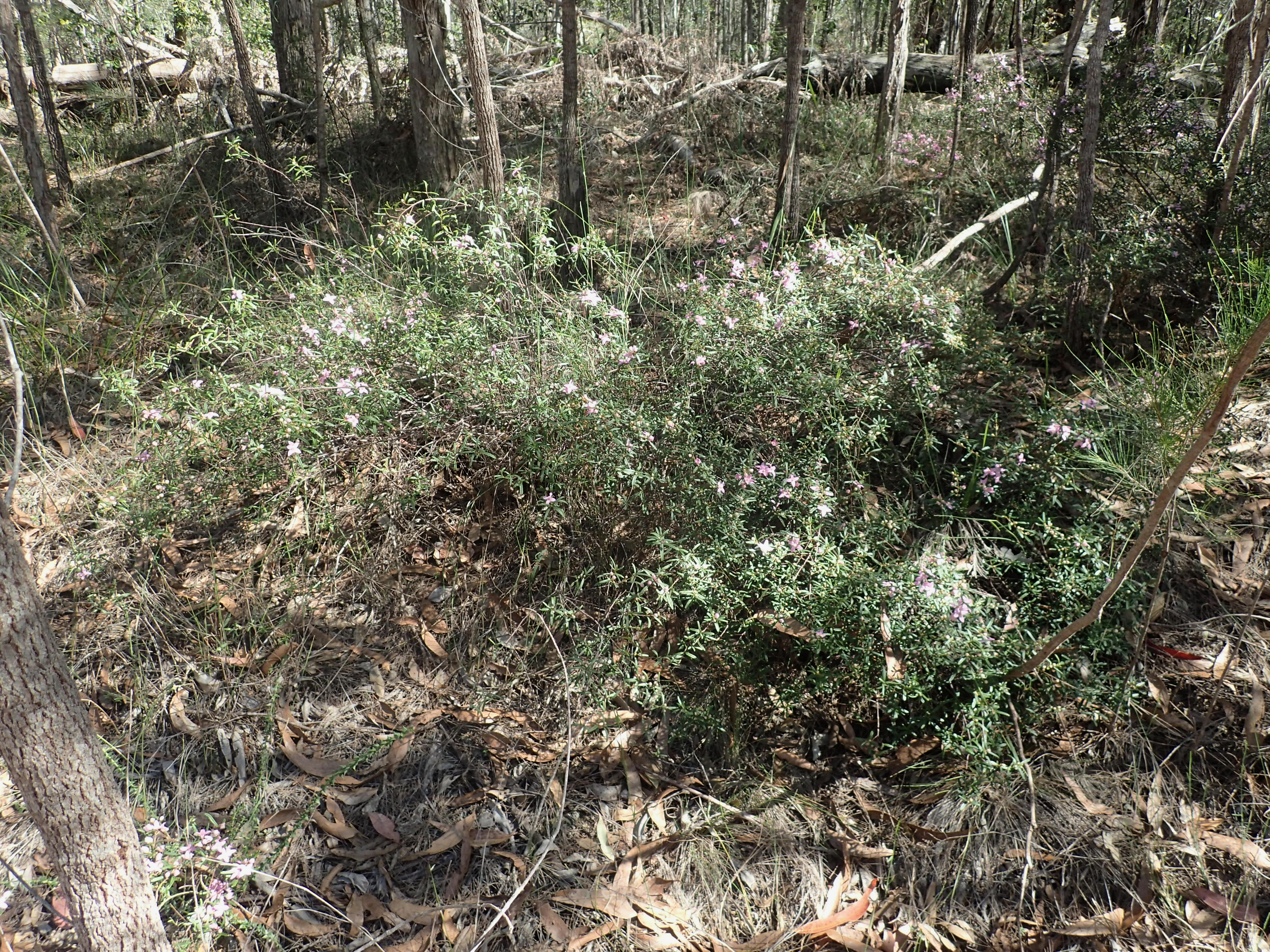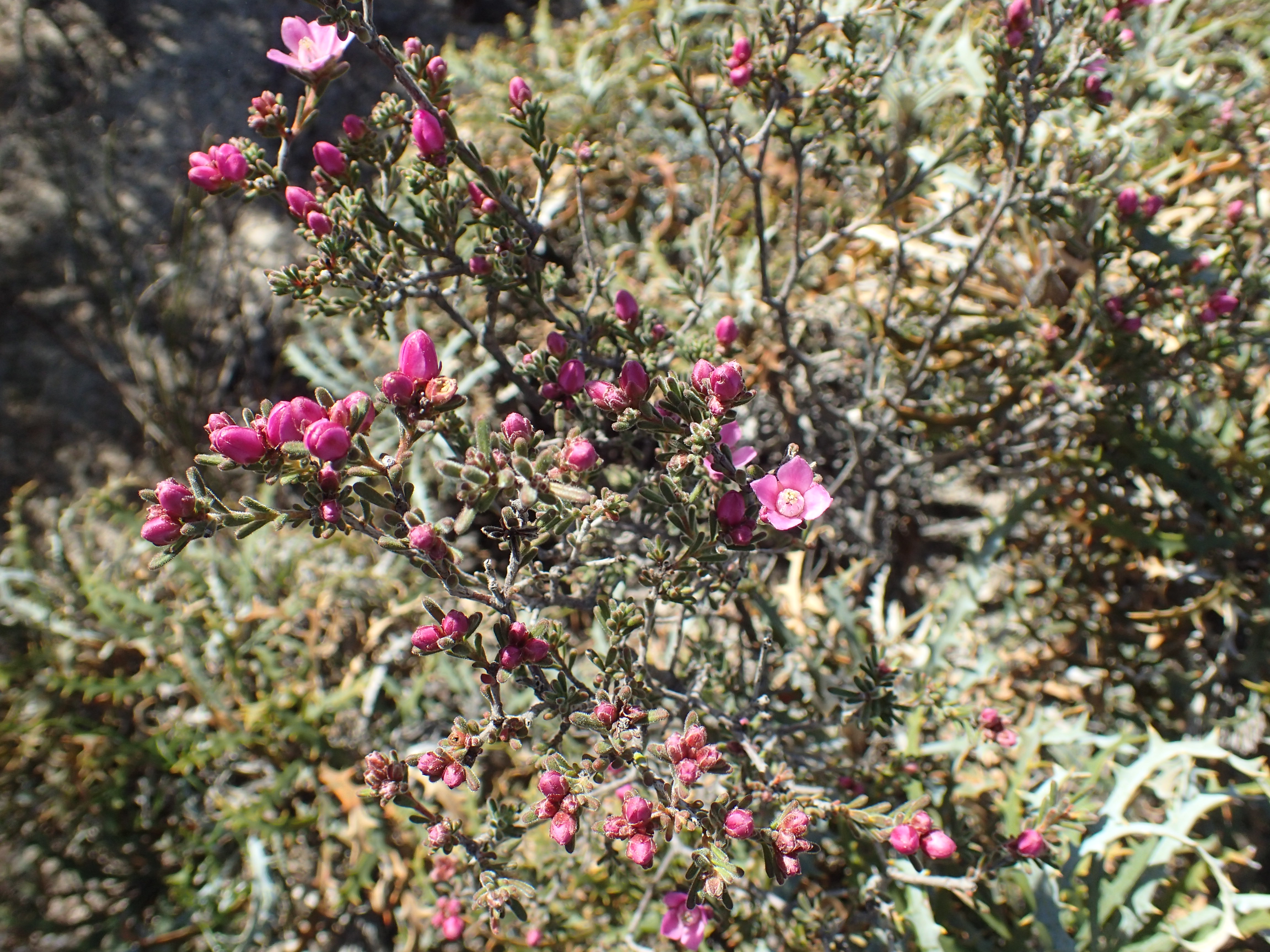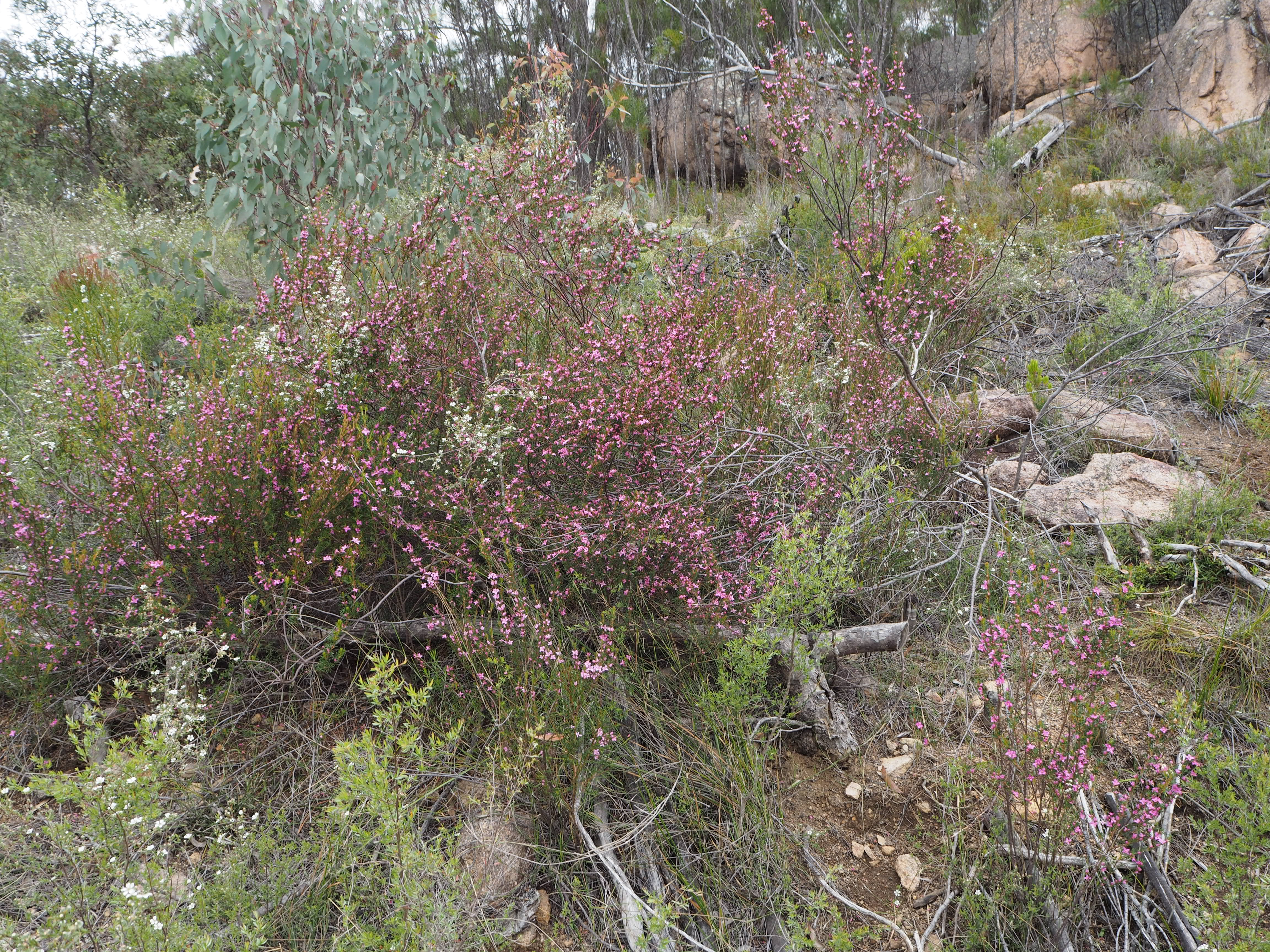|
List Of Boronia Species
A molecular phylogenetic study in 2020 showed that as then circumscribed ''Boronia'' was polyphyletic, and species were moved to other genera, mainly '' Cyanothamnus''. The split was accepted in a 2021 classification of the family Rutaceae. The following list shows the species accepted by Plants of the World Online, . *'' Boronia adamsiana'' F.Muell. *'' Boronia affinis'' R.Br. ex Benth. *'' Boronia alata'' Sm. *'' Boronia albiflora'' R.Br. ex Benth. *''Boronia algida'' F.Muell. *'' Boronia alulata'' Sol. ex Benth. *'' Boronia amabilis'' S.T.Blake *'' Boronia amplectens'' Duretto *'' Boronia anceps'' Paul G.Wilson *'' Boronia angustisepala'' Duretto *'' Boronia anomala'' Duretto *'' Boronia barkeriana'' F.Muell. *'' Boronia barrettiorum'' Duretto *'' Boronia beeronensis'' Duretto *'' Boronia bella'' Duretto *'' Boronia boliviensis'' J.B.Williams & J.T.Hunter *'' Boronia bowmanii'' F.Muell. *'' Boronia capitata'' Benth. *'' Boronia chartacea'' P.H.Weston *'' Boronia citrata'' N ... [...More Info...] [...Related Items...] OR: [Wikipedia] [Google] [Baidu] |
Molecular Phylogenetics
Molecular phylogenetics () is the branch of phylogeny that analyzes genetic, hereditary molecular differences, predominantly in DNA sequences, to gain information on an organism's evolutionary relationships. From these analyses, it is possible to determine the processes by which diversity among species has been achieved. The result of a molecular phylogenetic analysis is expressed in a phylogenetic tree. Molecular phylogenetics is one aspect of molecular systematics, a broader term that also includes the use of molecular data in taxonomy and biogeography. Molecular phylogenetics and molecular evolution correlate. Molecular evolution is the process of selective changes (mutations) at a molecular level (genes, proteins, etc.) throughout various branches in the tree of life (evolution). Molecular phylogenetics makes inferences of the evolutionary relationships that arise due to molecular evolution and results in the construction of a phylogenetic tree. History The theoretical frame ... [...More Info...] [...Related Items...] OR: [Wikipedia] [Google] [Baidu] |
Boronia Barkeriana
''Boronia barkeriana'', commonly known as Barker's boronia, is a plant in the citrus family, Rutaceae and is endemic to eastern Australia. It is a shrub with ground-hugging branches, simple, toothed leaves and bright pink, four- petalled flowers. Description ''Boronia barkeriana'' is a shrub with ground-hugging branches and which grows to a height of with glabrous, often reddish stems. It has simple, narrow lance-shaped to narrow egg-shaped leaves long and wide, usually without a petiole. The leaves have small teeth on the edge and are often reddish along the edges and undersides. Between two and eight bright pink to pinkish mauve flowers are arranged in groups in the leaf axils, each flower on a pedicel long. The four sepals are purple, triangular to egg-shaped, about long and wide. The four petals are long with their bases overlapping. The eight stamens have hairy edges. Flowering occurs mainly from September to December and the fruit are glabrous, about long and ... [...More Info...] [...Related Items...] OR: [Wikipedia] [Google] [Baidu] |
Boronia Crassifolia
''Boronia crassifolia'' is a plant in the citrus family, Rutaceae and is endemic to the south-west of Western Australia. It is a small, slender shrub with pinnate leaves, and yellowish green to brownish, four petalled flowers. Description ''Boronia crassifolia'' is a slender, rounded shrub that grows to a height of about . It has pinnate leaves with three, five or seven linear to spatula-shaped leaflets . The flowers are yellowish green to brownish, about in diameter and hang from the leaf axils on a pedicel long. The four sepals are red, more or less round and about long. The four petals are about long. The eight stamens alternate in length with the four near the petals longer than those near the sepals. Taxonomy and naming ''Boronia crassifolia'' was first formally described in 1845 by Friedrich Gottlieb Bartling and the description was published in ''Plantae Preissianae''. The specific epithet (''crassifolia'') is derived from the Latin words ''crassus'' meaning "thi ... [...More Info...] [...Related Items...] OR: [Wikipedia] [Google] [Baidu] |
Boronia Corynophylla
''Boronia corynophylla'' is a plant in the citrus family, Rutaceae and is endemic to a small area in the south-west of Western Australia. It is a spreading shrub with thin, simple, cylindrical to narrow club-shaped leaves and pale red, four- petalled flowers in groups of up to three on the ends of the branches. Description ''Boronia corynophylla'' is a spreading, densely branched shrub that grows to a height of about with its branches covered with soft hairs. It has simple, thin cylindrical to narrow spindle-shaped or club-shaped leaves long and about wide. The flowers are pale red and are borne singly or in groups of up to three on the end of the stems, each on a pedicel long with two tiny bracteoles at the base. The four sepals are egg-shaped, dark reddish brown, long and hairy with many pimply glands. The four petals are egg-shaped and leathery, about long with their bases overlapping. The eight stamens are club-shaped with those nearest the sepals slightly longer than ... [...More Info...] [...Related Items...] OR: [Wikipedia] [Google] [Baidu] |
Boronia Coriacea
''Boronia coriacea'' is a plant in the citrus family, Rutaceae and is endemic to a small area in the south-west of Western Australia. It is a small shrub with pinnate leaves and hairless pink, four- petalled flowers in small clusters on the ends of the branches. Description ''Boronia coriacea'' is a small ericoid shrub that grows to a height of with more or less glabrous stems, leaves and flowers. Its leaves are pinnate with three or five leathery leaflets and about long on a petiole long. The leaflets are wedge-shaped with narrower end towards the base, about long and wide. The flowers are pink and are borne in clusters on the end of the stems, each on a pedicel about long. The four sepals are egg-shaped to almost round, about long with their bases overlapping. The four petals are egg-shaped, about long with their bases overlapping. The eight stamens are club-shaped and erect, those nearest the sepals slightly longer than the stigma. Flowering occurs in April or fro ... [...More Info...] [...Related Items...] OR: [Wikipedia] [Google] [Baidu] |
Boronia Clavata
''Boronia clavata'', commonly known as Bremer boronia, is a plant in the citrus family, Rutaceae and is endemic to the south-west of Western Australia. It is a shrub with bipinnate leaves and pale, yellowish green, four- petalled flowers. Description ''Boronia clavata'' is a shrub that grows to a height of with its stems covered with short, soft hairs. The leaves are mostly pinnate with between three and seven linear to wedge-shaped leaflets long. The flowers are pale yellowish green and arranged single in leaf axils on a pedicel about long. The four sepals are egg-shaped to narrow triangular, long and covered with short, soft hairs. The four petals are egg-shaped with the narrower end towards the base, about long. The eight stamens are club-shaped and alternate in length, those adjacent to the petals are shorter than those adjacent to the sepals. Flowering occurs from August to October and the fruit are glabrous and about long and wide. Taxonomy and naming ''Boronia cl ... [...More Info...] [...Related Items...] OR: [Wikipedia] [Google] [Baidu] |
Boronia Citriodora
''Boronia citriodora'', commonly known as lemon-scented boronia, lemon plant or lemon thyme, is a woody shrub that is endemic to Tasmania. It has pinnate leaves and white to pink flowers that are arranged singly or in groups of up to seven, in the leaf axils or on the ends of the branches. Description ''Boronia citriodora'' is a woody shrub that is sometimes prostrate, otherwise erect and growing to a height of . It has pinnate leaves that are long and wide in outline with between three and nine leaflets, on a petiole long. The end leaflet is narrow elliptic to narrow lance-shaped, long and wide. The side leaflets are similar but longer. The flowers are white to pink and are arranged singly or in groups of up to seven in leaf axils or on the ends of branches on a stalk long. The four sepals are triangular, long and wide. The four petals are long and the eight stamens have a few short hairs. Flowering occurs from November to February and the mature fruit are smooth, l ... [...More Info...] [...Related Items...] OR: [Wikipedia] [Google] [Baidu] |
Boronia Citrata
''Boronia citrata'', commonly known as lemon boronia, is a plant in the citrus family, Rutaceae and is endemic to Victoria. It is an erect, woody shrub with pinnate, strongly lemon-scented leaves and pale pink to rosy pink, four- petalled flowers arranged in groups of up to five. Description ''Boronia citrata'' is an erect, woody shrub that grows to a height of or higher with tiny, stiff hairs on its leaves and branches. The leaves are pinnate, long and wide in outline and with between five and eleven leaflets. The petiole is long. The end leaflet is narrow egg-shaped, long and wide and the side leaflets are longer, long and wide. The flowers are pale pink to rosy pink, and arranged singly or in groups of up to five in leaf axils or on the end of the branches. Each flower has a pedicel up to long. The four sepals are more or less triangular, long and wide and the four petals are long with their bases overlapping. The eight stamens are hairy but the style is smooth ... [...More Info...] [...Related Items...] OR: [Wikipedia] [Google] [Baidu] |
Boronia Chartacea
''Boronia chartacea'' is a plant in the citrus Family (biology), family Rutaceae and is endemism, endemic to the north coast of New South Wales. It is a shrub with Leaf#Divisions of the blade, simple, papery leaves and bright pink flowers, usually arranged singly in the leaf wikt:axil, axils. Description ''Boronia chartacea'' is a shrub that grows to a height of with young branches that are hairy. The leaves are papery, elliptic to oblong, long and wide on a Petiole (botany), petiole long. The leaves are covered with warty Gland (botany), glands and the edges are turned downwards or rolled under. The flowers are bright pink and are arranged singly or in groups of up to three in leaf axils, each flower on a stalk long. The four sepals are egg-shaped, long, wide and hairy on the lower side. The four petals are long. Flowering occurs from August to October and the fruit is a smooth Capsule (botany), capsule. Taxonomy and naming ''Boronia chartacea'' was first formally desc ... [...More Info...] [...Related Items...] OR: [Wikipedia] [Google] [Baidu] |
Boronia Capitata
''Boronia capitata'', commonly known as the cluster boronia, is a plant in the citrus family, Rutaceae and is endemic to the south-west of Western Australia. It is a slender, spreading shrub with simple leaves and pink, four- petalled flowers. Description ''Boronia capitata'' is a slender, spreading shrub that grows to a height of . It has simple, thick, linear to club-shaped leaves long. The flowers are pink and are arranged in clusters on the ends of the branches, each on a pedicel long. The four sepals are broadly elliptic to narrow triangular, and the four petals are broadly elliptic, about long. Taxonomy and naming ''Boronia capitata'' was first formally described in 1863 by George Bentham and the description was published in ''Flora Australiensis'' from a specimen collected by James Drummond. The specific epithet (''capitata'') is a Latin word meaning "having a head". In 1971, Paul G. Wilson described three subspecies: * ''Boronia capitata'' subsp. ''capitata'' has l ... [...More Info...] [...Related Items...] OR: [Wikipedia] [Google] [Baidu] |
Boronia Bowmanii
''Boronia bowmanii'' is a plant in the citrus family, Rutaceae and is endemic to Queensland. It is an erect shrub with pinnate leaves and four- petalled flowers. Description ''Boronia bowmanii'' is an erect shrub with many branches and that grows to a height of about . Its leaves are pinnate with three, five, seven or nine leaflets and it is long and wide in outline. The end leaflet is linear to narrow elliptic, long and wide and the side leaflets are long and wide. The flowers are arranged in groups of between three and seven on a woody peduncle usually long. The four sepals are egg-shaped to triangular, long and wide. The four petals are long and wide but increase in size as the fruit develop. Flowering occurs from January to October and the fruit is a capsule long and wide. Taxonomy and naming ''Boronia bowmanii'' was first formally described in 1864 by Ferdinand von Mueller and the description was published in '' Fragmenta phytographiae Australiae''. The sp ... [...More Info...] [...Related Items...] OR: [Wikipedia] [Google] [Baidu] |
Boronia Boliviensis
''Boronia boliviensis'', commonly known as Bolivia Hill boronia is a plant in the citrus family, Rutaceae and is endemic to a small area on the Northern Tablelands of New South Wales. It is a strongly scented shrub with pinnate leaves, deep pink flowers in spring and with its young branches covered with fine, yellow hairs. It is only known from higher parts of the Bolivia Range where it grows on granite outcrops. Description ''Boronia boliviensis'' is an erect, strongly scented shrub with many branches and which grows to a height of between . The branches, when young are densely covered with fine, yellowish, branched hairs but become glabrous with age. Its leaves are dark green and bipinnate with between 5 and 9 leaflets. Each leaflet is narrow elliptic in shape, long and arranged on a jointed rachis usually long and wide. The flowers are borne singly or in groups of 3 in leaf axils on a branched peduncle long, with branches (pedicels) long. There are 4 deep red, pointed ... [...More Info...] [...Related Items...] OR: [Wikipedia] [Google] [Baidu] |




